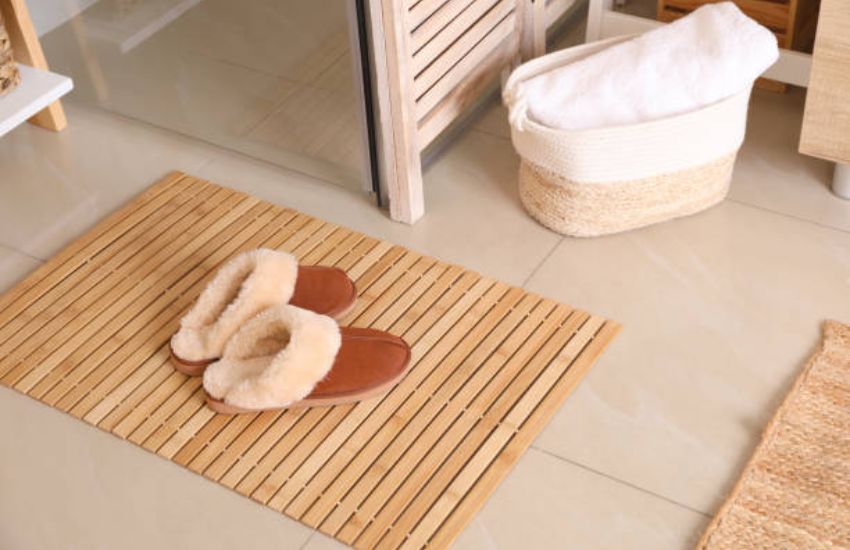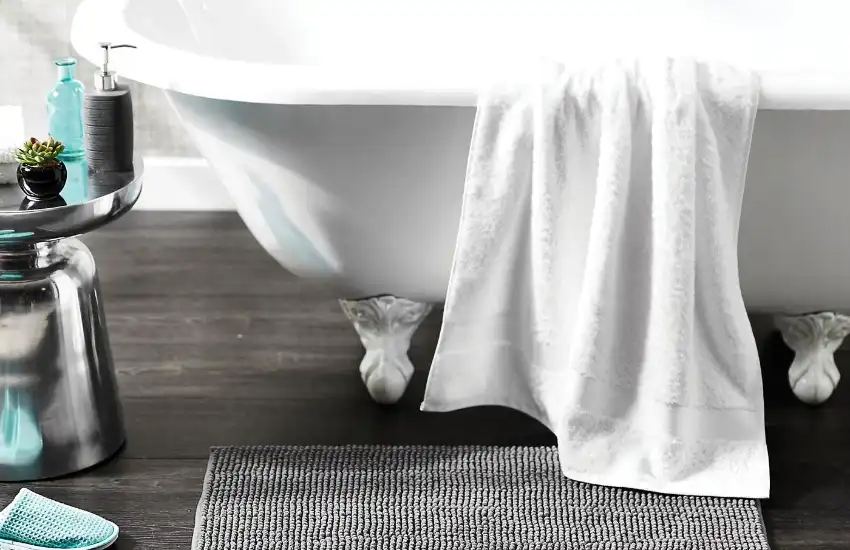Whether or not a doormat or welcome matting is going to be affected by the elements is a common and fairly major concern that everyone has, at least once in their lifetime. This goes particularly true for when you’ve invested in new (and expensive!) outdoor matting, and of course, you want it to last long, plus stay the same.
The safety, as well as longevity of doormats, become an even bigger challenge within areas with tropical wet and tropical monsoon climates. Given the cruciality of the problem, Customized Logo Mats has written this article to help you make the most out of your outdoor floor matting. This info also comprises an all-inclusive buying guide.
Are Doormats Susceptible To Rain Damage? | Everything You Need To Know
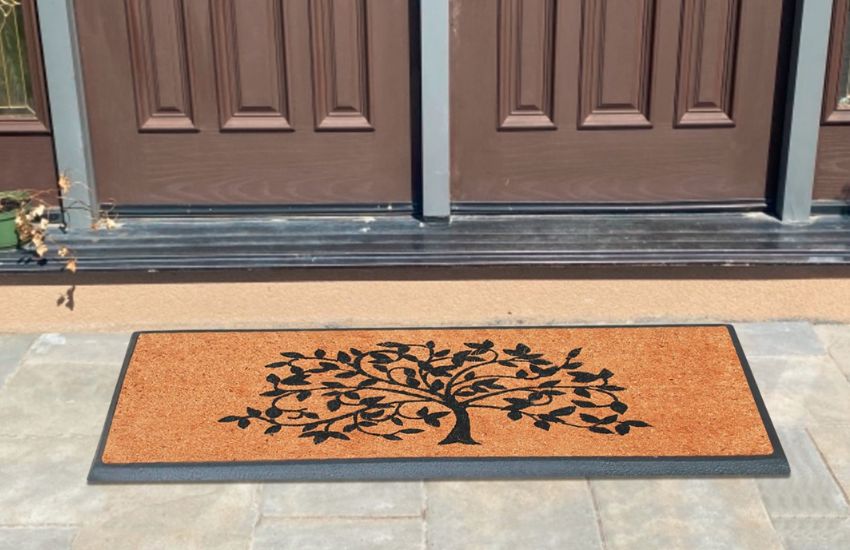
The foremost answer to this question is that the likelihood as well as the extent of getting damaged by moisture primarily depends on the material of the doormat.
- Mats made with synthetic materials, such as Rubber, PVC, Nylon, and Polyester have a high resistance against water. That’s because they do not absorb moisture and dry rapidly. Also, they do not let mold or mildew growth take place.
- Natural material mats like Coir, Sisal, and Seagrass can get damaged due to rain because they tend to absorb water and become waterlogged quickly, which eventually deteriorates and fades them. This can also lead to mold or mildew buildup.
Next up, comes the fact that the damage or deterioration can also be influenced by the level of rainfall, i.e. direct and constant exposure to rain will cause a welcome mat to go bad soon, whereas occasional subjection does not become extremely problematic.
Types Of Damages Likely To Happen Because Of Rain Water

In general, only low-quality and poorly constructed mats are prone to damage because of moisture or rainwater. High-quality ones can resist most adverse effects efficiently and can last long.
Here’s what rainwater can do to a mediocre-grade welcome or door mat:
-
Fading/Discoloration:
The most obvious sign of a water-damaged doormat is discoloration or color-fading. This is especially true in the case of acidic rain; it will cause the mats to deteriorate more quickly than regular rainfall.
-
Fiber Disintegration:
Getting waterlogged causes the mat’s fibers to lose their structural integrity and they can either be frayed or broken completely, in worst cases. This usually happens when mats get exposed to water for longer periods without getting enough time to dry.
-
Staining:
Rainwater also brings dust, dirt, and debris alongside and this junk can stain the surface of the doormat. Another major sign is a persistent staining that won’t go away even after cleaning or washing the mat thoroughly.
-
Mold/Mildew Growth:
As mentioned earlier, a damp welcome mat can be a breeding ground for mold and mildew, particularly the one that does not get any sunlight or proper drying. The mold may not be visible initially, but you can guess its growth by the unpleasant odor.
-
Rusting (occasional):
If your mat has any metal components like wire brushes or grommets, they can corrode or rust due to moisture and this will add to the overall deterioration of the mat. This again, compromises the overall structural integrity of the mat.
How To Fix/Reverse Rain Damage On A Mat
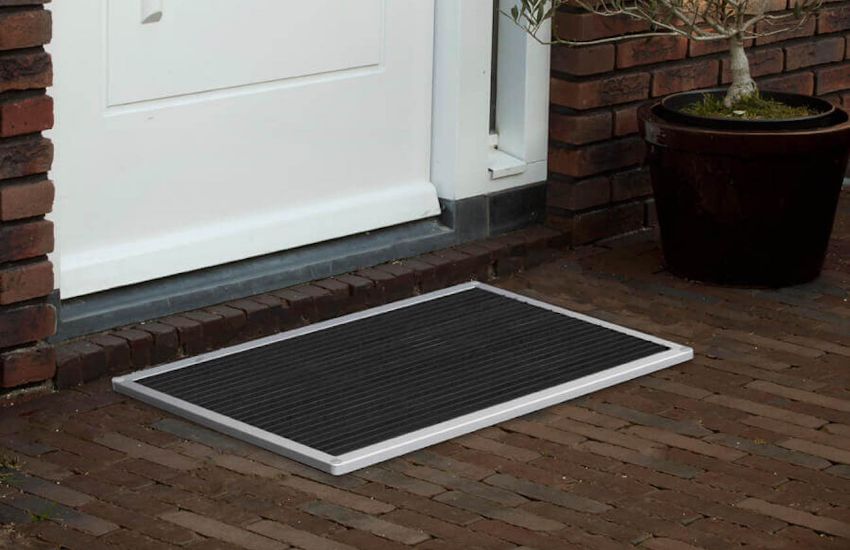
If your matting has been affected by rainwater lately, you can treat and clean it thoroughly to lessen the adversity. Do keep in mind that taking action promptly will keep huge trouble and expenses at bay.
Here are a few simple steps to deal with a mat that has been damaged due to rainfall:
- Start by shaking off the mat to get rid of all the accumulated water. You can also try squeezing it gently but don’t be very intense or the fibers will get ruptured/frayed.
- Place the mat on a dry and clean surface in a well-ventilated space or under direct sunlight for complete drying.
- After the mat has been dried thoroughly, take a vacuum cleaner and use it to take out all the dirt, dust, and debris from the mat. Alternatively, you can sweep the mat.
- In case of any stains or marks, you’ll need to perform spot cleaning. For this purpose, you can use any mild detergent or household cleaning agents like vinegar.
- Perform gentle yet detailed scrubbing to take out the staining and rinse the cleaner off completely, afterward. You might need to conduct this step more than once.
- If your doormat has been giving off some sort of nasty odor, you can deodorize it with the help of baking soda. Simply sprinkle it generously and vacuum it away after a while.
Tips To Choose The Right Matting For Outdoors
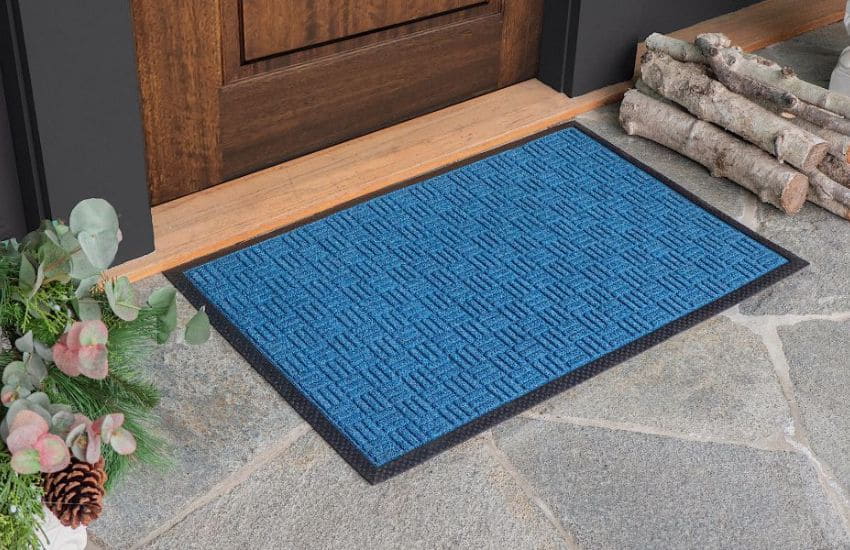
Benefiting the most from any given product starts with the right selection. We’ve got a detailed buying guide that will help you in purchasing the most suitable and easy-to-handle mats for your exterior areas.
- The best material recommendation for an external welcome matting is Rubber, since it does not become slippery, even when wet and ensures walking safety. However, do not get rubber mats if your area gets acidic rain, since they are susceptible to damage.
- Polyester doormats are another great choice which come with high moisture resistance and are affordable as well. They are available in many sizes for easy suitability. Make sure you invest in polyester mats that have an anti-slip surface to ensure safety.
- After rainfall, shake or squeeze your mats thoroughly to take out all the excess water and allow plenty of air circulation for effective drying. Also, flip the mat over to let the backside get dry as well.
- The drying of mats after they’ve been exposed to rainwater can be accelerated with the help of air humidifiers or ceiling fans. You can also place them outdoors for air to do the job, but make sure you put them in a covered space and not under intense sunlight.
- During heavy rainfall or snowfall, it’s best to bring the mats indoors or at least have them covered with a sheet or some furnishing. Even if your doors are away from a point where it rains, you should consider saving the mats because they can be affected by water accumulated on floors.
Putting In A Nutshell
Doormats or welcome mats being essential for every indoor and outdoor area, need to be taken care of and protected properly. Keeping a doormat safe from external elements, most commonly rainfall, is among such measures which must be ensured timely and accurately.
To help you out in this regard, we’ve mentioned a range of hacks as well as advice with which you can maintain your external mats with ease and make your investment last long. And if you’re about to get new ones, we’ve also presented you with a relatable buying guide to make useful choices. Best of luck!

